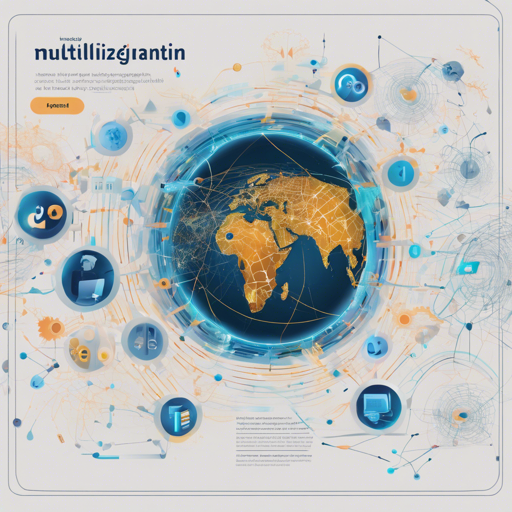Welcome to the exciting world of multilingual language models! In this guide, we’ll walk you through the fascinating journey of training a mind-boggling 176 billion parameter language model with BigScience. Sounds daunting? Fear not! With the right understanding and approach, you’ll be ready to dive into this expansive field. Let’s embark on this journey together!
What is BigScience?
BigScience is a cutting-edge workshop focused on the collaborative study and development of large language models, involving over 1,000 researchers globally. The main event? Training a multilingual model that promises to change the way machines understand and produce human language.
Training Setup and Details
The training of BigScience’s model began on March 11, 2022, and was planned to last for 3-4 months using 384 A100 80GB GPUs housed in the Jean Zay public supercomputer. Each aspect of this training endeavor is meticulously crafted to ensure efficiency and effectiveness. Here’s what you need to know:
- Model Details:
- 176B parameters with a decoder-only architecture (GPT-like)
- 70 layers with 112 attention heads per layer
- Hidden dimensionality of 14,336 and a sequence length of up to 2048 tokens
- Uses ALiBi positional embeddings and GeLU activation function
- Dataset:
- Multilingual capabilities covering 46 languages
- 341.6 billion tokens (1.5 TB of text data)
- Tokenizer vocabulary of 250,680 tokens
- Engineering Specifications:
- 384 A100 GPUs employed for training, each with 80 GB memory
- Checkpoint sizes and configurations are optimized for efficiency
- Estimated training duration is 3-4 months
The Analogy: Building a Tower
Imagine you’re tasked with building a massive tower, symbolizing our language model. Each floor of the tower represents a parameter in our model. To create the tallest and sturdiest structure, you gather the best bricks (data) and a team of skilled workers (models) to assemble it efficiently.
The foundation (initial layers) must be robust to withstand the weight of the upper floors (final layers). Each brick is measured (tokens), ensuring they fit perfectly to create a strong framework. As you build higher, your challenges increase, like ensuring that your resources (GPUs) remain stable and your construction site (the supercomputer) is as energy-efficient as possible. Together, your team will overcome any obstacles to create the ultimate tall tower — a fully functional, multilingual language model.
Troubleshooting Tips
Even the most ambitious projects can encounter hiccups. Here are some common issues and how you can address them:
- Slow Training Speed:
Ensure all your GPUs are utilized efficiently. You can streamline data loading processes or optimize hyperparameters to enhance training throughput.
- Inconsistencies in Results:
Carefully check the dataset for any anomalies or biases that may affect training outcomes.
- Hardware Failures:
Regularly monitor the health and stability of your GPUs, and have backup systems or redundant configurations in place.
For more insights, updates, or to collaborate on AI development projects, stay connected with fxis.ai.
Conclusion
The journey to train a multilingual 176 billion parameters model is challenging but immensely rewarding. With careful planning, thorough understanding, and an ability to adapt, you can contribute to the advancement of AI through language modeling. At fxis.ai, we believe that such advancements are crucial for the future of AI, as they enable more comprehensive and effective solutions. Our team is continually exploring new methodologies to push the envelope in artificial intelligence, ensuring that our clients benefit from the latest technological innovations.
Now, go forth and dive into the fascinating world of language model training!

